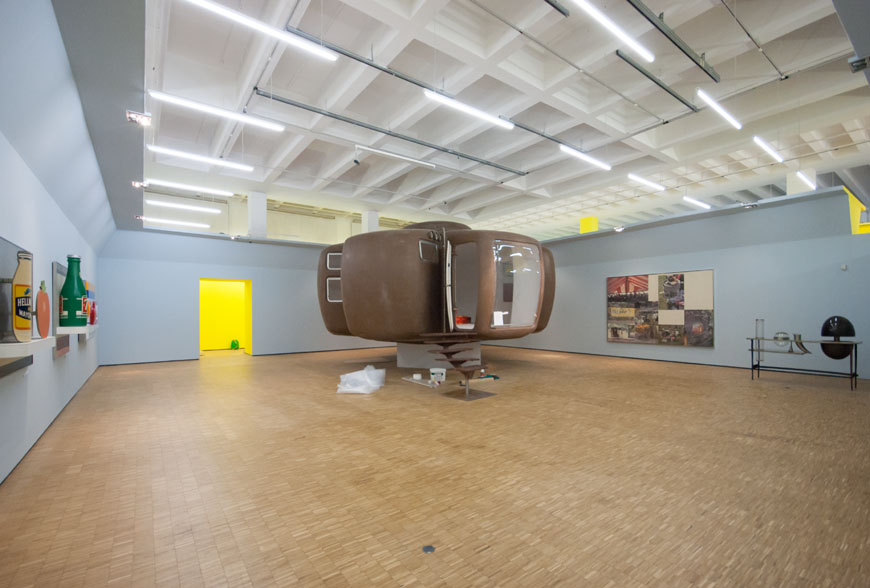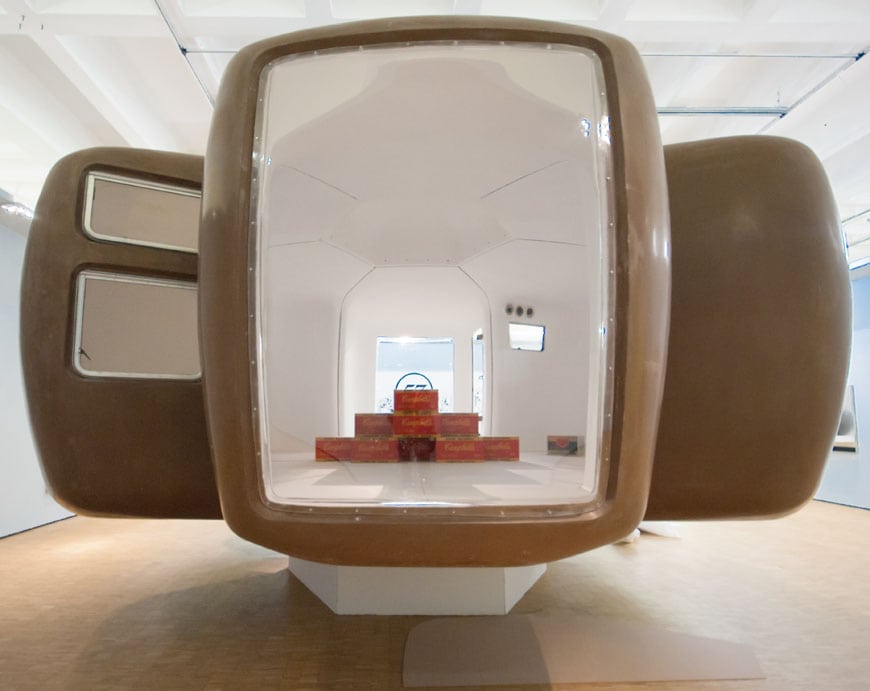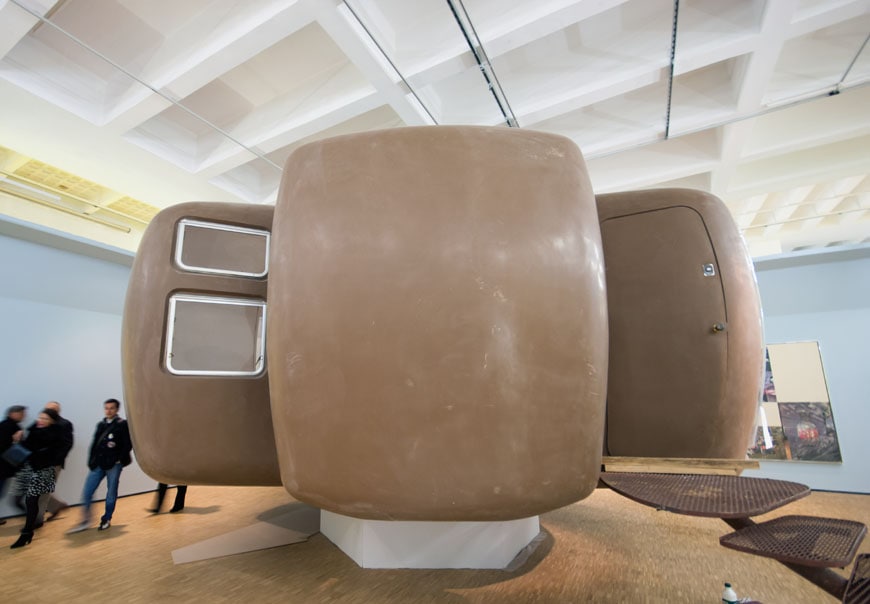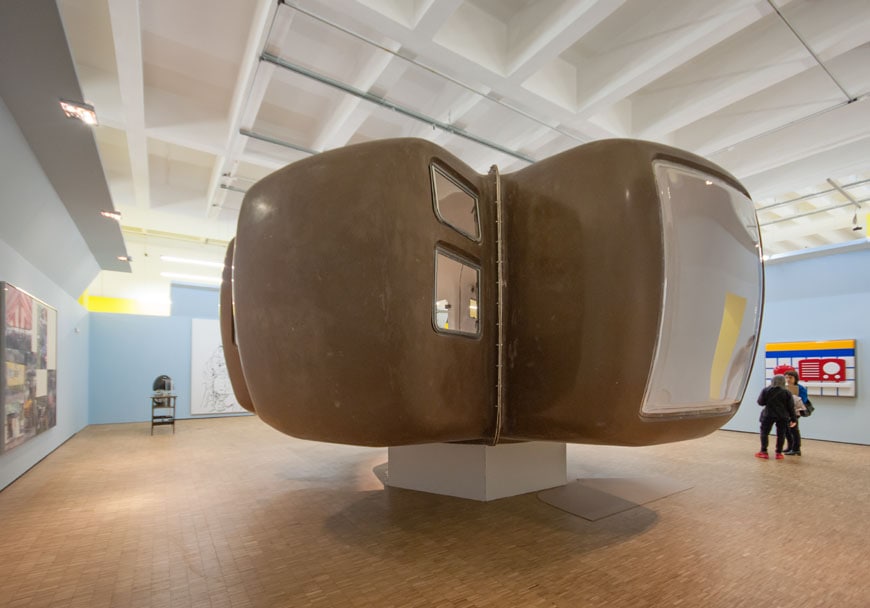The Bubble House by Jean-Benjamin Maneval, 1963
Jean-Benjamin Maneval, Maison Bulle (Bubble House) 1968 model; photo © Inexhibit, 2015
“Maison Bulle” – the history of the Bubble House by Jean-Benjamin Maneval – 1963
Recently, at an exhibition in Milan, I had the rare occasion to see a restored version of the famous Maison Bulle (The Bubble House) designed by French architect Jean-Benjamin Maneval in the early Sixties. For that occasion, the house was used as a sort of temporary exhibition pavilion for a series of works by Andy Warhol. Hitherto, I had seen the house by Maneval only in architectural history books, and not very frequently; thus, I decided to investigate a bit more this strange, yet fascinating building.
Historical framework – the futuristic plastic house
The Maison Bulle is possibly the most successful design among those we could collectively call “futuristic plastic houses“, mostly designed in the ’50s, ’60s, and early ’70s.
The concept, which originates from the experimental work of Austrian-American architect Frederick John Kiesler, and especially from his unrealized Endless House designed in 1950 (which was intended to be made in concrete, though), was developed by a generation of French, British, and Nordic designers, such as Ionel Schein (Plastic House, 1956), Arthur Quarmby (Emergency Mass Housing Units, 1962), Jean-Benjamin Maneval (Maison Bulle, 1963), Matti Suuornen (Futuro house, 1968), and Pascal Häusermann (Domobiles, 1971).
The aim was to create small “democratic” buildings, made in various types of synthetic material, which had to be cheap, modular, movable, compact, industrially manufactured, durable, and integrated into the landscape. The influence of the “space-age aesthetic”, the introduction of new plastic materials, and new utopian forms of collective living deeply influenced those designers and their vision of modernity.
The “Maison Bulle” by Jean Maneval – history, design, and materials
Most of those designs were never realized or built as prototypes only. Yet, the Bubble House by Maneval is an exception, since about 300 units of it were produced, some of which still exist today. Jean-Benjamin Maneval (1923-1986) conceived his Bubble House in 1963; a key point of Maneval’s approach, which somehow set him apart from the other architects mentioned earlier, is his interest in the industrial production process. Indeed, the French architect developed his plastic house through a strict collaboration with Marcel Dupleaux, an engineer from the chemical company Pétroles d’Aquitaine, and founded the company Batiplastique, together with major companies such as Lafarge, Setec, and the same Pétroles d’Aquitaine, to produce and commercialize the house.
Officially named Bulle Six Coques (Six-Shell Bubble), the mass production of the house started in 1968, with three colors available: white, green, and brown, which were chosen to maximize the integration of the dwelling units into the landscape.
The house is composed of six polyester shells, weighing 460 pounds each and identical in shape and dimensions, fastened to, and connected by a lower hexagonal steel frame and an upper polyester dome; the windows are made of a single curved piece of methacrylate. Overall, the house weighs 3,300 pounds, can be transported by a truck, and assembled on-site in a few days; the structure is supported by a small concrete base.
Encompassing an internal floor area of 390 square feet forming a single, largely undivided, space; the house comprises an entrance area, two bedrooms, a living room, a kitchen, and a bathroom. Only the bathroom is enclosed by thin internal walls. Two or more houses can be connected to create theoretically infinite clusters.
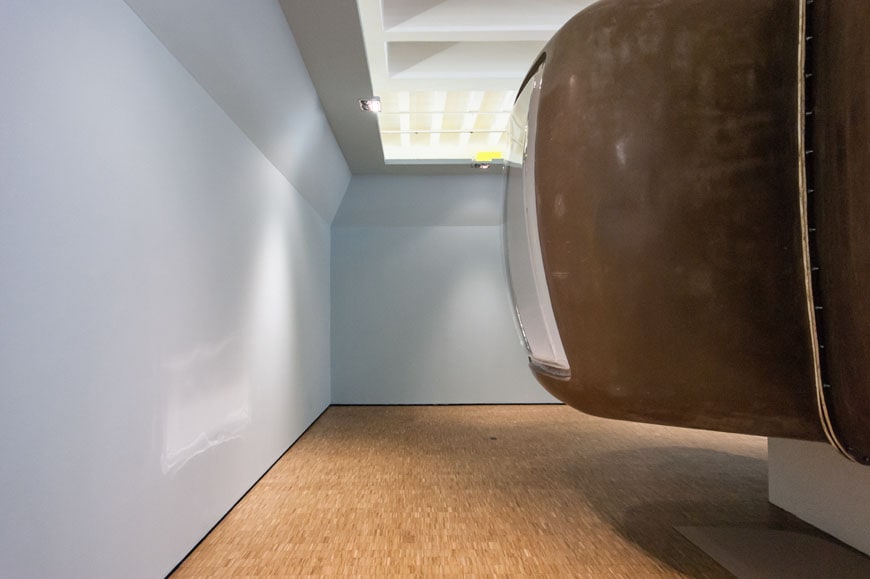
Jean-Benjamin Maneval, Maison Bulle (Bubble House), 1968 model; photo © Inexhibit, 2015
The most notable example of the use of Maneval’s Bubble House for residential development was the one realized near the village of Gripp, in the Haute-Pyrenées region of France.
Here, 20 units were installed in 1968 to create a new tourist resort; the houses were in use until 1998 and some of them are still visible now. Unfortunately, after a short period of success, the production of the Maison Bulle terminated in 1970.
copyright Inexhibit 2024 - ISSN: 2283-5474


